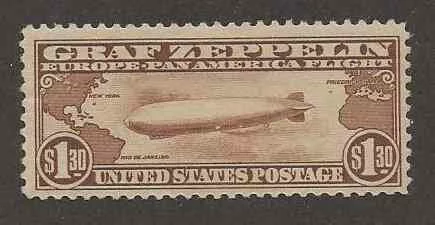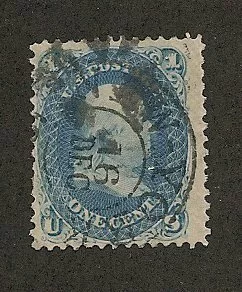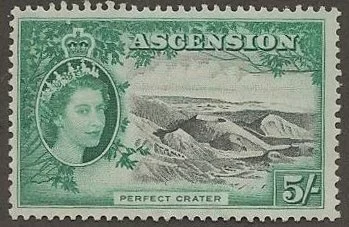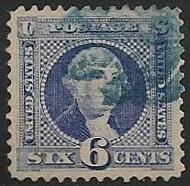Stamp Collecting Values
Quickly determining stamp collecting values, or finding out how much a stamp collection or single postage stamp is worth, should be easy.
Why does it take years to become an expert in the field of stamp collecting?
1. Identifying stamps is complex requiring extensive research, knowledge, and experience
2. There is an overwhelming amount of information to learn but that info isn't easy to find or use
3. Value is extremely dependent on condition and many stamps have been intentionally altered to "look" better and these take experience to identify
|
The good news is you can pretty quickly get a general idea of stamp collecting values by following a few rules of thumb. The bad news is these rules help identify what is likely not valuable so more research and effort will likely be required to get an accurate valuation. |
Figuring out how to appropriately adjust prices on individual rare stamps is based on centering and condition. There are many subjective variables but, again, there are a few general guidelines that will steer you in the right direction for the vast majority of collections. It doesn't take decades of stamp collecting to understand how the stamp market works.
There are some great online resources to get comparative prices. Check ebay and look for the same stamps of the same condition and same centering. I can't stress how important it is to find examples as close as possible to what you have because even sligth condition differences can mean dramatic price differences - a $100 stamp with a tear is probably not worth $10.
Always remember to reduce that ebay price by about 20% to account for the ebay and paypal fees - a lesson many learn they hard way when they get far less than expected after all the fees.
But that shouldn't dissuade you from checking for similar listed stamps - being armed with multiple pricing sources of information will help you better estimate the value.
In addition to price comparisons of 'like' stamps online, check out the industry-standard price guides. In the United States that is the Scott Postage Stamp Catalog. There are many other catalogs of note throughout the world, such as the appropriately named Stanley Gibbons Commonwealth and British Empire Stamps Catalog.
In the US, most public libraries have a set of Scott catalogs but, depending on when it was printed, the prices may be quite different than current prices. There are cyclical price fluctuations in the stamp market just like any other asset market so you can find catalogs with out of whack prices, both higher and lower, from current valuations.
One example showing the importance of using current prices is the stamp asset bubble that burst in the early 1980s. Rather than the massive price increases you would expect over three decades, some of the rarest and most popular stamps have actually gone down in value over the past 30 years.
The United States 1930 release of the Graf Zeppelins (Scott #C13 - C15) is a notorious example. This popular and scarce set of stamps was more valuable in 1980 than it is today.

Back to the catalog - the best thing you can do is spend 15 minutes reading the introductory material in the front of the catalog where the pricing method and prices are described in detail.
Once comfortable, start flipping through checking for the stamps you have. Use the catalogs as a general tool and it won't steer you wrong.
But don't zero in on any one stamp as having a huge postage stamp value - I've lost track of the times I've found a stamp worth hundreds of dollars only to realize I had the "common" version and was mistaking it for the "rare" version.
For example, one of the mostly widely used stamps of its time, the 1861 issue of a 1 cent Franklin was produced in estimated quantities of 150,000,000!
 |
Such huge quantites mean that even today it is a common stamp and most examples are worth a few dollars. Most US Stamps collections contain one or more of these stamps, shown at left. |
However, this same stamp was issued in a slightly different format with a Z-grill impression on the back of the stamp (Scott #85A). Only 2 examples of that rarest of US stamps are known to have survived and it is valued at $3,000,000.
Quite a difference for two stamps that have the identical design and can only be told apart by an expert adept at identifying and expertizing the generally faint and incomplete grill impressions.
I've been holding off on the bad news but here it is – most stamps and stamp collections are worth little to nothing. That being said, there are rare stamps out there worth millions just waiting to be found so let’s get started!
General rules that are usually, but not always, true for stamp collecting values.
• Mint stamps with original gum on the back are worth more than used stamps
•Earlier stamps are worth more than modern stamps
•Stamps with any faults (creases, tears, thins, etc.) are worth far less than those in perfect condition. One thing that is common with most collectibles, especially stamps, is that condition is everything. The same stamp that normally sells for $100 may not even be worth $10 if there are creases, thins, tears, etc.
•Boxes of loose used stamps are usually worth very little
•Stamp albums that are sparsely filled are usually worth very little
•Stamp albums for children or beginners are usually worth very little
•Used US postage stamps printed in the last 70 years are worth almost nothing
• Mint with original gum US postage stamps printed in the last 70 years are, with a few exceptions, worth less than their face value and can be used for postage without worry. I use old stamps back into the 1930s as postage to mail envelopes. Old stamps are still valid for postage...well, all stamps issued after the civil war at least :)
Often the best you can do with postage is to use it for mail. Unfortunately, many collections have so many modern mint stamps that there is no chance to actually use them all even in a few lifetimes! This is why people routinely sell stamps at far below face value (many stamp dealers offer 50-70% depending on their customer base, how much postage they already have in inventory, and what denominations are included). They will then either use it for postage or resell it at 75-90% of the face value to buyers that use it on mailings.
The stamp collecting boom of the 1930’s resulted in countless thousands of collectors hoarding newly issued stamps the US Postal Service issued. This kicked off a positive feedback loop that prompted the USPS to design and print more stamps to meet the increased demand.
The net effect is that virtually all US stamps produced since the 1930s are available in quantities that far exceed collector demand so stamp collecting values have suffered.
With mail use going down, stamp collecting values have also suffered. Sadly, for many stamp collectors that means that their stamp nest egg is worth only a fraction of what was originally paid.
Stamp collecting values also depend on the type of collection.
- Is it a collection of stamps on envelopes - Either first day covers, postal history, or otherwise?
- Are there boxes of loose stamps?
- Are there stamp collecting albums?
- Are there books? Stamp catalogs, philatelic literature, etc?
- Are there boxes of ‘other stuff’ that probably looks like a mix of stamps in small envelopes and glassines, stamps in dealer stock cards or pages, and a wide variety of stamps in different mounts and formats?
For collections with better and rare stamps it won’t be enough to figure stamp collecting values in general. You’ll need to selectively check some individual stamps to get a general sense of quality of the collection. This can have dramatic implications as a small collection of perfect stamps can be worth many, many times that of the same stamps in poor condition. You don't know which quality of collection you have until you check the stamps.
At the single stamp level, there are many factors that can dramatically affect stamp collecting values but, for the most part, it all comes down to supply and demand. Many stamps are rare but not valuable because there is not enough demand to drive the price up. But find a rare and high demand stamp and watch out. A handful of the crown jewels of philately have sold over the past few decade for multi-million dollar sums.
And there are further supply and demand factors at work affecting ranges of stamp collecting values for unique copies of the same stamp. For example, classic US stamps have a high demand from the stamp investors for perfectly centered and completely faultless stamps which drives stamp collecting values up exponentially.
The price of a ‘perfect’ stamp can be hundreds of times the price for the exact same stamp that is slightly off center or has some minor condition problem (e.g. a small crease that you can’t even see without a magnifying glass).
Return to Main Stamp Collecting page, from this Stamp Collecting Values page
- Stamp Values for a Stamp Collection, Old Stamps and Current Rate Stamps
- Stamp Values for a Stamp Collection, Old Stamps and Current Rate Stamps
- Buy Stamps
- Buy Stamps Online Now
- Stamp Auctions - When should you sell your stamp collection through an auction?
- Stamp Auctions - When should you use an auction house to sell your stamp collection?
- Custom Postage Stamps - Design your own Stamp and Personalize your Mail
- Custom Postage Stamps - Design your own Stamp and Personalize your Mail
- Postage Stamp Picture Gallery - Photos of Early US and Worldwide Stamps
- Postage Stamp Picture Gallery. Photos of Early US and Worldwide Stamps
- How to Sell Stamps : Stamp Auctions, Stamp Dealers, Online Auctions, and more!
- How to Sell Stamps - From selling an inherited stamp collection to becoming a stamp dealer.
- US Stamps - a philatelic history of famous and rare stamps
- US Stamps - a philatelic history of the famous and rare stamps of the United States.
- Stamp Collecting Blog
- This Stamp Collecting Blog keeps you up to date on additions to the www.stamp-collecting-resource.com Web site. Subscribe here!
- Stamp Collecting Albums - The final destination for many stamps
- Stamp Collecting Albums : The Final Destination for many Stamps.
- Stamp Collecting Supplies - Albums, Pages, Tongs, etc.
- Stamp Collecting Supplies - Albums, Pages, Tongs and all the supplies of the hobby
- Forever Stamp Pictures
- Forever Stamp Pictures - Recent Commemorative Stamp Designs
- Stamp Clubs and Societies - What are they all about?
- Stamp Clubs and Societies - What are they all about?
- Stamp Collecting Resource SiteSearch
- Stamp Collecting Resource SiteSearch - Google this site or the entire web
- Stamp Collecting Links
- Stamp Collecting Links
- First Day Covers
- First Day Covers. Collecting stamps used the first day it is released is what FDCs are all about.
- US Postage Stamps : A Primer on Stamps, old and new.
- US Postage Stamps - Rare stamps to modern US Postal Service issues.
- Buy Stamps Tips : A How-To Guide for Collectors and Investors
- Buy Stamps - How to Purchase Stamps as a Hobby or Investment
- Topical Stamp Collecting
- Topical Stamp Collecting is booming and with good reason!
- Contact Me!
- Contact Me! Enter a private message here.
- Stamp Stories - Rare and Unusual with Pictures and History
- Stamp Stories - Rare and Unusual with Pictures and History

EMERALD VENTURES STAMP & COIN AUCTIONS
Build the finest collection with top quality US and Worldwide stamps.
Bid in quarterly auctions online or visit our stamp shop in Richmond, VA!!!
EMERALD VENTURES STAMP & COIN AUCTIONS
click to open in a new window
|
|
|


New! Comments
Have your say about what you just read! Leave me a comment in the box below.